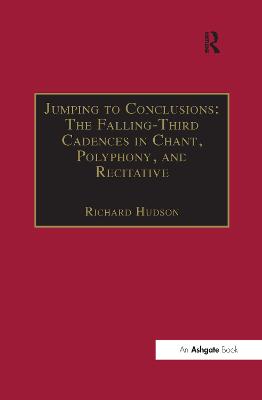This book concerns the cadences which reach their conclusion by jumping from scale degree 3 down to 1 or to 1-7-1. The chronological history commences in Gregorian Chant, where the falling third is often preceded by scale degree 4, forming the striking figure 4-3-1. The cadences move, along with the borrowed chant melodies, into the polyphony of the late 14th, 15th and 16th centuries. Here, melodic figures with the shape of 4-3-1, but on any scale degree, become a significant element of style. At cadence the unbroken melodic progression 4-3-1-7-1 may lie entirely in the upper voice, or 4-3-1 may occur in a lower voice followed by 7-1 in the upper. The general effect of the falling third changes as the surrounding musical elements change and as polyphony itself evolves through time. The cadences are reborn in recitative, first in an unbroken form with 4-3-1-7-1 in the voice, later in a broken form with 4-3-1 in the voice, 7-1 in the instrumental continuo part. Many evolving rhythmic, harmonic, melodic, and other elements are important in the cadences, but two are especially significant, for they lead to difficult problems for later performers. These concern (1) the structure in which the accompaniment's V chord is notated directly below the voice's first or single scale degree 1, and (2) the possibility of an appoggiatura on scale degree 2 between the two notes of the falling third. The book suggests some new and unexpected solutions to both these problems and concludes with a brief history of the 4-3-1 figure. The book includes many musical examples by composers such as Dunstable, Dufay, Josquin, Palestrina, A. Scarlatti, J.S. Bach, Handel, Telemann, Haydn, Mozart, Schubert, Mendelssohn and Rossini.
- ISBN10 1138262994
- ISBN13 9781138262997
- Publish Date 2 December 2016 (first published 28 December 2005)
- Publish Status Active
- Publish Country GB
- Publisher Taylor & Francis Ltd
- Imprint Routledge
- Format Paperback
- Pages 224
- Language English
